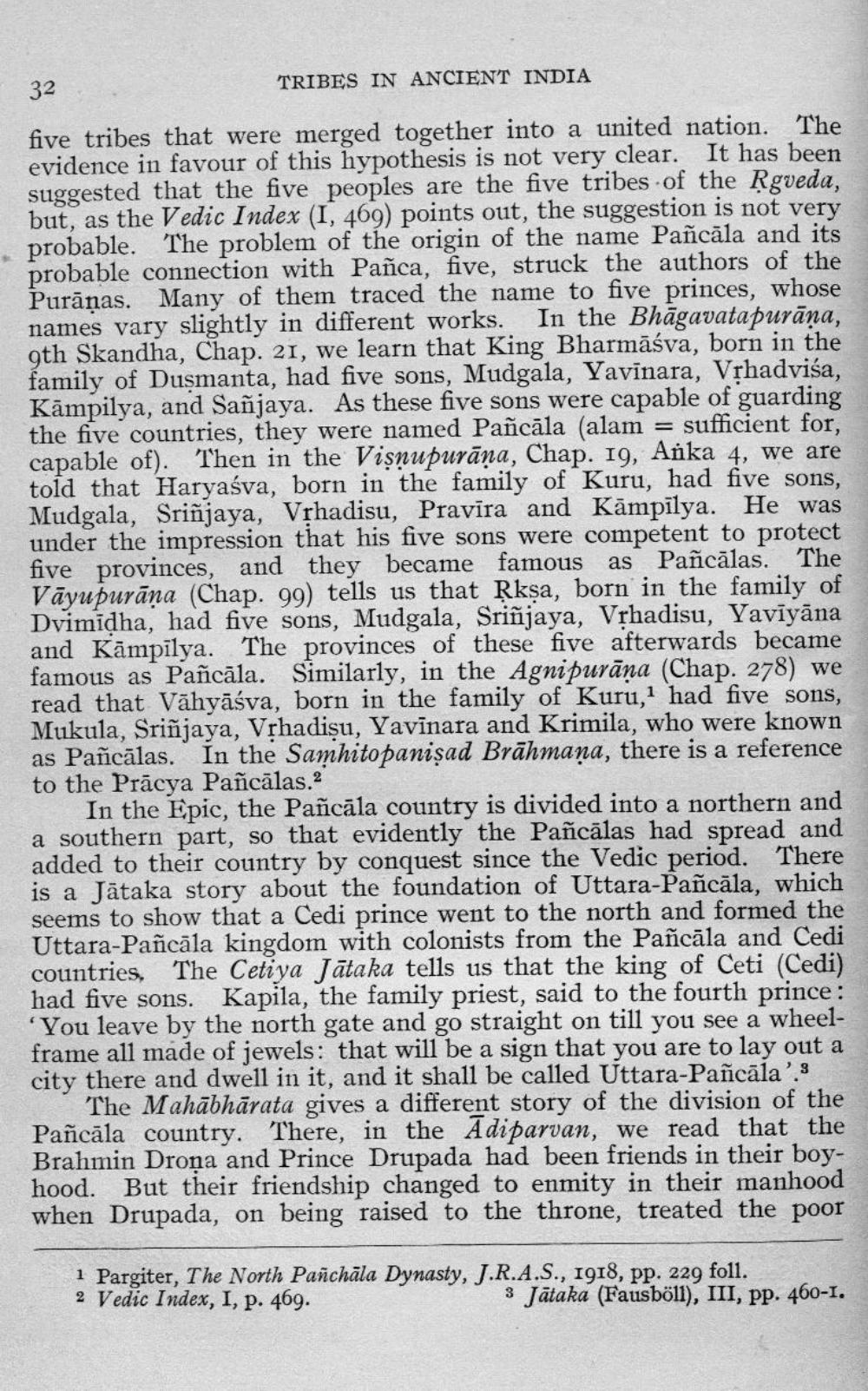________________
32
TRIBES IN ANCIENT INDIA
five tribes that were merged together into a united nation. The evidence in favour of this hypothesis is not very clear. It has been suggested that the five peoples are the five tribes of the Rgveda, but, as the Vedic Index (I, 469) points out, the suggestion is not very probable. The problem of the origin of the name Pañcāla and its probable connection with Pañca, five, struck the authors of the Purāṇas. Many of them traced the name to five princes, whose names vary slightly in different works. In the Bhāgavata purāna, gth Skandha, Chap. 21, we learn that King Bharmāśva, born in the family of Dusmanta, had five sons, Mudgala, Yavinara, Vịhadvisa, Kāmpilya, and Sañjaya. As these five sons were capable of guarding the five countries, they were named Pañcāla (alam = sufficient for, capable of). Then in the Vişnupurāna, Chap. 19, Ařka 4, we are told that Haryaśva, born in the family of Kuru, had five sons, Mudgala, Sriñjaya, Vrhadisu, Pravīra and Kāmpilya. He was under the impression that his five sons were competent to protect five provinces, and they became famous as Pañcālas. The Vāyupurāņa (Chap. 99) tells us that Rksa, born in the family of Dvimidha, had five sons, Mudgala, Sriñjaya, Vrhadisu, Yavīyāna and Kāmpilya. and Kamnilva The provinces of these five afterwards became famous as Pañcāla. Similarly, in the Agnipurāna (Chap. 278) we read that Vāhyāśva, born in the family of Kuru,1 had five sons, Mukula, Sriñjaya, Vshadişu, Yavīnara and Krimila, who were known as Pañcālas. In the Samhitopanişad Brāhmaṇa, there is a reference to the Prācya Pañcālas.2
In the Epic, the Pañcāla country is divided into a northern and a southern part, so that evidently the Pañcālas had spread and added to their country by conquest since the Vedic period. There is a Jātaka story about the foundation of Uttara-Pañcāla, which seems to show that a Cedi prince went to the north and formed the Uttara-Pañcāla kingdom with colonists from the Pañcāla and Cedi countries. The Cetiya Jātaka tells us that the king of Ceti (Cedi) had five sons. Kapila, the family priest, said to the fourth prince:
You leave by the north gate and go straight on till you see a wheelframe all made of jewels: that will be a sign that you are to lay out a city there and dwell in it, and it shall be called Uttara-Pañcāla'.:
The Mahābhārata gives a different story of the division of the Pañcāla country. There, in the Adiparvan, we read that the Brahmin Droņa and Prince Drupada had been friends in their boyhood. But their friendship changed to enmity in their manhood when Drupada, on being raised to the throne, treated the poor
1 Pargiter, The North Panchāla Dynasty, J.R.A.S., 1918, pp. 229 foll. 2 Vedic Index, I, p. 469.
3 Jataka (Fausböll), III, pp. 460-I.




